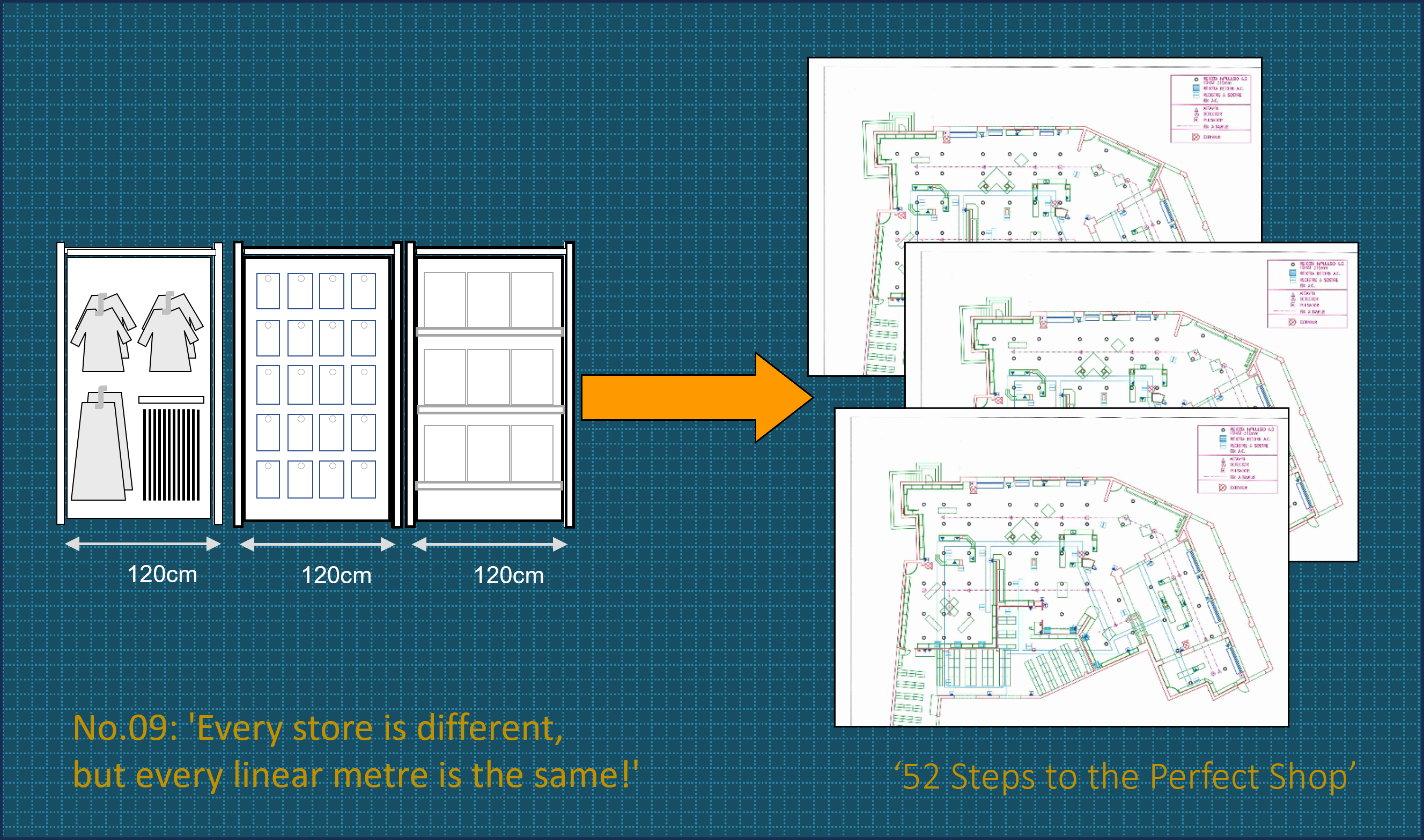Post No.09 in the weekly newsletter series:
‘52 Steps to the Perfect Shop!’
You too can have ‘The Perfect Shop’ by this time next year!
I’ve worked with many retail businesses, with many shops. We always go on a tour of their shops. Sometimes all of the shops are bad, rarely all of the shops are excellent, but most often there is a mixture of good and bad.
And most common of all is that whilst some are good, and some are bad, they are all different. Sometimes you wouldn’t even realise that they are the same retailer, owned by the same business.
The most common excuse retail businesses give for the variety of executions and standards across their shops is ‘all of our stores are different!’ This is a lazy excuse for poor planning, generally through the business.
And so we come to our 3rd important reason why a retail business should work with linear metre ‘product story blocks.’
“Every shop is different, but every linear metre is the same!” and in successful retail businesses “Every shop is different, but every ‘product story block’ is the same!
The fact is that there isn’t a retailer out their that doesn’t have a variety of different sized and shaped shops. Depending on the location strategy of the business they may be quite similar, or in fact, they may be part of a portfolio where nothing is the same, not even the number of floor levels.
But all can look consistently ‘in-brand’ with each having exactly the same displays spread across the different spaces, if the business plans, buys and delivers with an end-to-end strategy based on linear metre ‘Product Story Blocks.’
Begin with the buying & merchandising process that every retailer has, where detailed analysis is combined with strategic objectives and the assortment structure plan is developed. This is really just numbers by category and other range parameters.
Then buyers and designers and merchandisers populate the assortment skeleton with products to buy. That will include the correct balance and distribution of categories, colours, prices, image makers, planned bestsellers and core product…
Then one of 2 things can happen. Best practice takes the populated assortment plan and begins to group products into customer facing stories, and then begins to visualise how these stories will be created as linear metre ‘Product Story Blocks.’
This process can actually raise valuable questions about the originally planned balance of assortment parametres, in particular colours, patterns, product mix and image makers. The assortment becomes a series of perfect ‘product story blocks’ and can even have block variations for shops with different strategies.
Everything is visual! Everything is ‘blocked’ Everything is linear metres, and every shop is built, planned and merchandised as linear metres.
It doesn’t take much imagination to see how easy it then is to fit the visual product blocks into the empty block spaces allocated in every shop.
Alternatively, imagine the chaos of store managers and VM teams attempting to allocate and display for example, 2,500 options into a 1000sqm store, without a visual plan. Without ‘product story blocks!’
This would be the next step taken by worst practice. Visual decisions taken in-situ, 3, 6, 9 months after the initial assortment plan has been developed. When strategic analysis, and buying & merchandising have become a blur in retail time. Don’t go there!
Converting shop sqm to linear metres is essential. Transforming those linear metres into ‘Product Story Blocks’ is no longer a VM luxury, it is the difference between a shop flourishing and failing.
’52 Steps to the Perfect Shop!’
For everyone looking to improve their physical shops, or thinking of opening their first pop-up or permanent shop.
The weekly newsletters, and the 10 content modules they feature, have been created from my experiences of opening hundreds of shops, of all different sizes, situated across the world, selling just about everything there is to sell.
Every week we explore the sequential process of physical shop development to help you deliver your perfect shop.
Missed any of the previous ’52 Steps’ then just click here to catch up…
